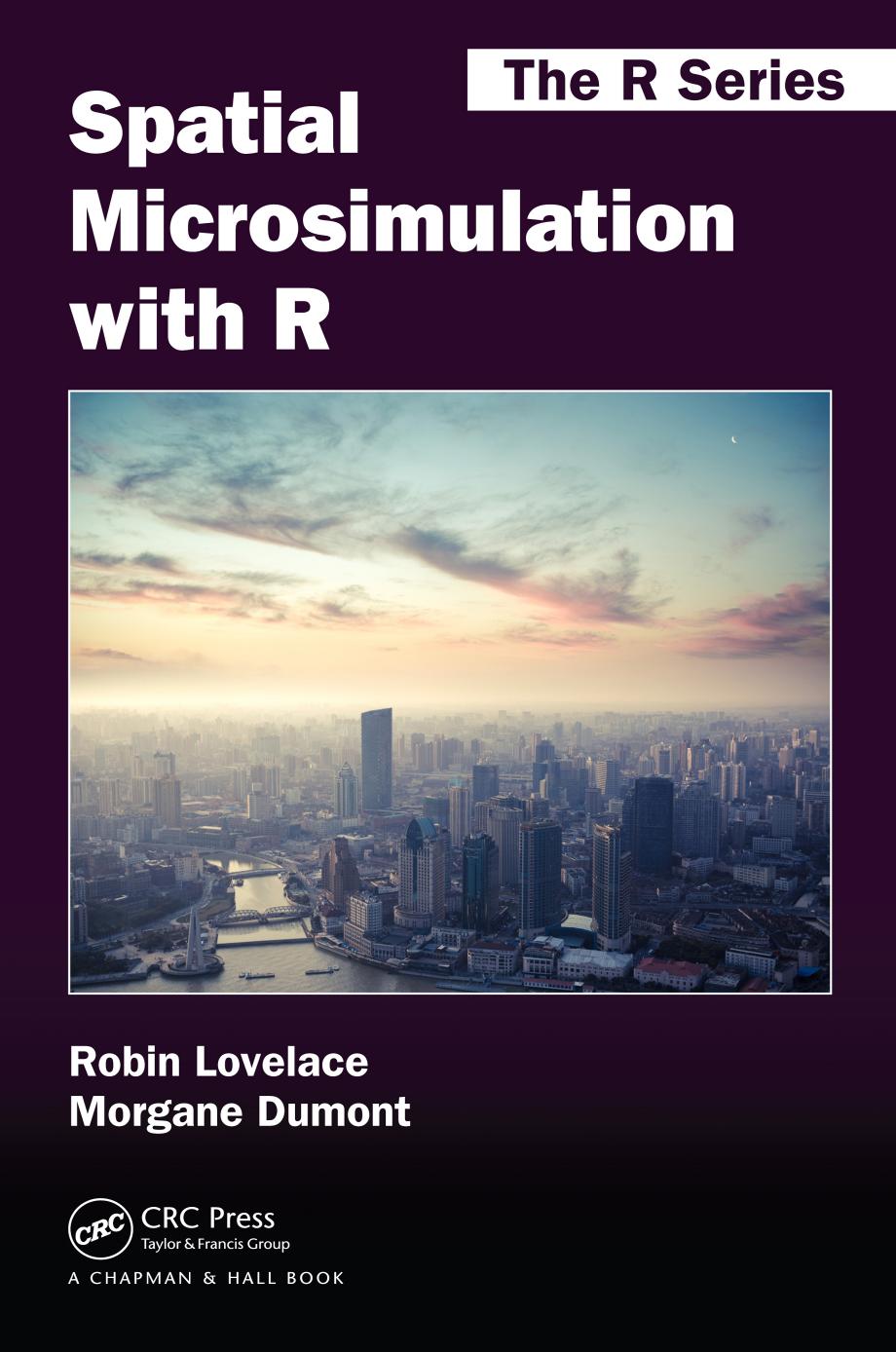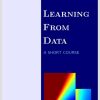Spatial Microsimulation with R 1st edition by Robin Lovelace, Morgane Dumont ISBN 1315360667 9781315360669
$70.00 Original price was: $70.00.$35.00Current price is: $35.00.
Instant download Spatial Microsimulation with R after payment
Spatial Microsimulation with R 1st edition by Robin Lovelace, Morgane Dumont – Ebook PDF Instant Download/Delivery: 1315360667, 9781315360669
Full download Spatial Microsimulation with R 1st edition after payment

Product details:
ISBN 10: 1315360667
ISBN 13: 9781315360669
Author: Robin Lovelace, Morgane Dumont
Generate and Analyze Multi-Level Data Spatial microsimulation involves the generation, analysis, and modeling of individual-level data allocated to geographical zones. Spatial Microsimulation with R is the first practical book to illustrate this approach in a modern statistical programming language. Get Insight into Complex BehaviorsThe book progresses from the principles underlying population synthesis toward more complex issues such as household allocation and using the results of spatial microsimulation for agent-based modeling. This equips you with the skills needed to apply the techniques to real-world situations. The book demonstrates methods for population synthesis by combining individual and geographically aggregated datasets using the recent R packages ipfp and mipfp. This approach represents the “best of both worlds” in terms of spatial resolution and person-level detail, overcoming issues of data confidentiality and reproducibility. Implement the Methods on Your Own DataFull of reproducible examples using code and data, the book is suitable for students and applied researchers in health, economics, transport, geography, and other fields that require individual-level data allocated to small geographic zones. By explaining how to use tools for modeling phenomena that vary over space, the book enhances your knowledge of complex systems and empowers you to provide evidence-based policy guidance.
Spatial Microsimulation with R 1st Table of contents:
Part I Introducing spatial microsimulation with R
1 Introduction
1.1 Who this book is for and how to use it
1.2 Motivations
1.3 A definition of spatial microsimulation
1.4 Learning by doing
1.5 Why spatial microsimulation with R?
1.6 Learning the R language
1.7 Typographic conventions
1.8 An overview of the book
2 SimpleWorld: A worked example of spatial microsimulation
2.1 Getting setup with the RStudio environment
2.1.1 Installing R
2.1.2 RStudio
2.1.3 Projects
2.1.4 Downloading data for the book
2.2 SimpleWorld data
2.3 Generating a weight matrix
2.4 Spatial microdata
2.5 SimpleWorld in context
2.6 Chapter summary
3 What is spatial microsimulation?
3.1 Terminology
3.1.1 Spatial microsimulation as SimCity
3.1.2 Spatial microsimulation: method or approach?
3.2 What spatial microsimulation is not
3.3 Applications
3.3.1 Health applications
3.3.2 Economic policy evaluation
3.3.3 Transport
3.4 Assumptions
3.5 Chapter summary
Part II Generating spatial microdata
4 Data preparation
4.1 Accessing the input data
4.2 Target and constraint variables
4.3 Loading input data
4.4 Subsetting to remove excess information
4.5 Re-categorising individual level variables
4.6 Matching individual and aggregate level data names
4.7 ‘Flattening’ the individual level data
4.8 Chapter summary
5 Population synthesis
5.1 Weighting algorithms
5.2 Iterative Proportional Fitting
5.2.1 IPF in theory
5.2.2 IPF in R
5.2.3 IPF with ipfp
5.2.4 IPF with mipfp
5.3 Integerisation
5.3.1 Concept of integerisation
5.3.2 Example of integerisation
5.4 Expansion
5.4.1 Weights per individual
5.4.2 Weights per category
5.5 Integerisation and expansion
5.6 Comparing ipfp with mipfp
5.6.1 Comparing the methods
5.6.2 Comparing the weights for SimpleWorld
5.6.3 Comparing the results for SimpleWorld
5.6.4 Speed comparisons
5.7 Chapter summary
6 Alternative approaches to population synthesis
6.1 GREGWT
6.2 Population synthesis as an optimization problem
6.2.1 Reweighting with optim and GenSA
6.2.2 Combinatorial optimisation
6.3 simPop
6.4 The Urban Data Science Toolkit (UDST)
6.5 Chapter summary
7 Spatial microsimulation in the wild
7.1 Selection of constraint variables
7.2 Preparing the input data
7.3 Using the ipfp package
7.3.1 Performing IPF on CakeMap data
7.3.2 Integerisation
7.4 Using the mipfp package
7.4.1 Performing IPF on CakeMap data
7.5 Comparing methods of reweighting large datasets
7.5.1 Comparison of results
7.5.2 Comparison of times
7.6 Chapter summary
8 Model checking and evaluation
8.1 Internal validation
8.1.1 Pearson’s r
8.1.2 Absolute error measures
8.1.3 Root mean squared error
8.1.4 Chi-squared
8.1.5 Which test to use?
8.1.6 Internal validation of CakeMap
8.2 Empty cells
8.3 External validation
8.4 Chapter summary
9 Population synthesis without microdata
9.1 Global cross-tables and local marginal distributions
9.2 Two level aggregated data
9.3 Chapter summary
10 Household allocation
10.1 Independent data (individuals and households)
10.1.1 Household type selection
10.1.2 Constituent members selection
10.1.3 End of the household generation process
10.2 Cross data: individual and household level information
10.2.1 Without additional household’s data
10.2.2 With additional household’s data
10.3 Chapter summary
Part III Modelling spatial microdata
11 The TRESIS approach to spatial microsimulation
11.1 Overview of TRESIS modelling system
11.1.1 Differences between TRESIS and other microsimulation systems
11.2 Synthetic households
11.2.1 What are synthetic households?
Synthetic households in TRESIS
11.2.2 Required data for generating synthetic households
11.2.3 Synthetic households in R
11.3 Using demand models to allocate synthetic households to zones using R
11.3.1 Simple discrete choice model for residential location
11.3.2 Results
11.4 Conclusions
11.4.1 Limitations
Freight models
11.4.2 MetroScan-TI
11.4.3 Extending residential location to transport models in R
11.5 Chapter summary
12 Spatial microsimulation for agent-based models
12.1 ABM software
12.2 Setting up SimpleWorld in NetLogo
12.2.1 Graphical User Interface in NetLogo
Views
Controls
Settings
12.3 Allocating attributes to agents
12.3.1 Defining variables
12.3.2 Reading agent data – Option 1
12.3.3 Reading agent data – Option 2
12.4 Running SimpleWorld
12.4.1 More variable definitions
12.4.2 More setup procedures
12.4.3 The main Go procedure
12.4.4 Adding plots to the model
12.4.5 Stopping behavior
12.5 Control the ABM from R
12.5.1 Running a single NetLogo simulation
12.5.2 Running multiple NetLogo simulations
12.6 Chapter summary
13 Appendix: Getting up-to-speed with R
13.1 R understands vector algebra
13.2 R is object orientated
13.3 Subsetting in R
13.4 Further R resources
glossary
Preface
Index
People also search for Spatial Microsimulation with R 1st :
spatial microsimulation
spatial microsimulation model
a spatial person
bayesian spatial modeling in r
microsimulation with r
Tags: Robin Lovelace, Morgane Dumont, Spatial Microsimulation


